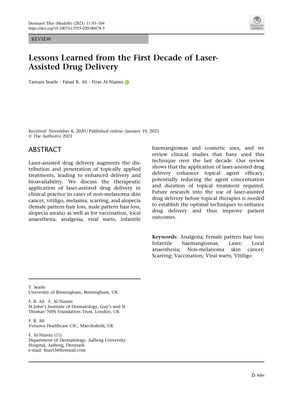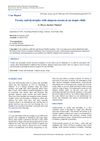Lessons Learned from the First Decade of Laser-Assisted Drug Delivery
January 2021
in “
Dermatology and Therapy
”

TLDR Laser-assisted drug delivery has shown improved treatment outcomes for skin conditions and has potential to reduce side effects and treatment time.
The document summarizes a decade of research on laser-assisted drug delivery (LADD), particularly focusing on the use of ablative fractional lasers (AFXL) like CO₂ and Er:YAG lasers to enhance the efficacy of topical treatments for various dermatological conditions. It cites several studies, including a split-face study of 22 patients with melasma, a scar treatment study with 23 patients, and a study on alopecia with four patients, demonstrating improved outcomes with LADD. The strongest evidence is for the use of AFXL pretreatment in conjunction with methyl aminolevulinate photodynamic therapy (MAL-PDT) for actinic keratoses, which has shown to be effective without adverse effects. The document suggests that LADD has the potential to reduce treatment duration and concentration of drugs, thereby minimizing side effects. However, it calls for more extensive randomized controlled trials to optimize LADD parameters and fully assess its benefits and potential side effects. No new studies with human participants or animals were conducted for this review, and no funding was received for the study or its publication.

